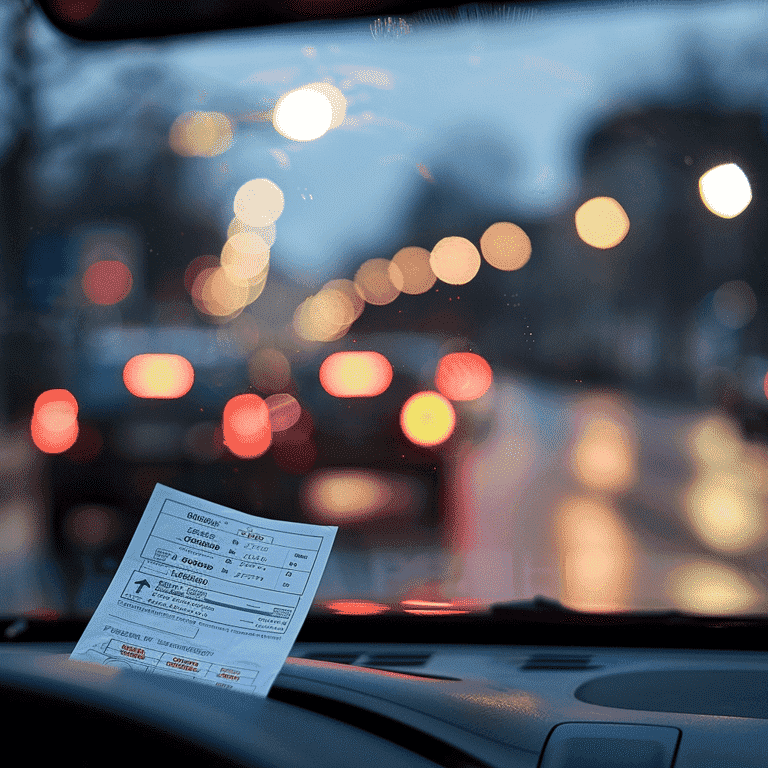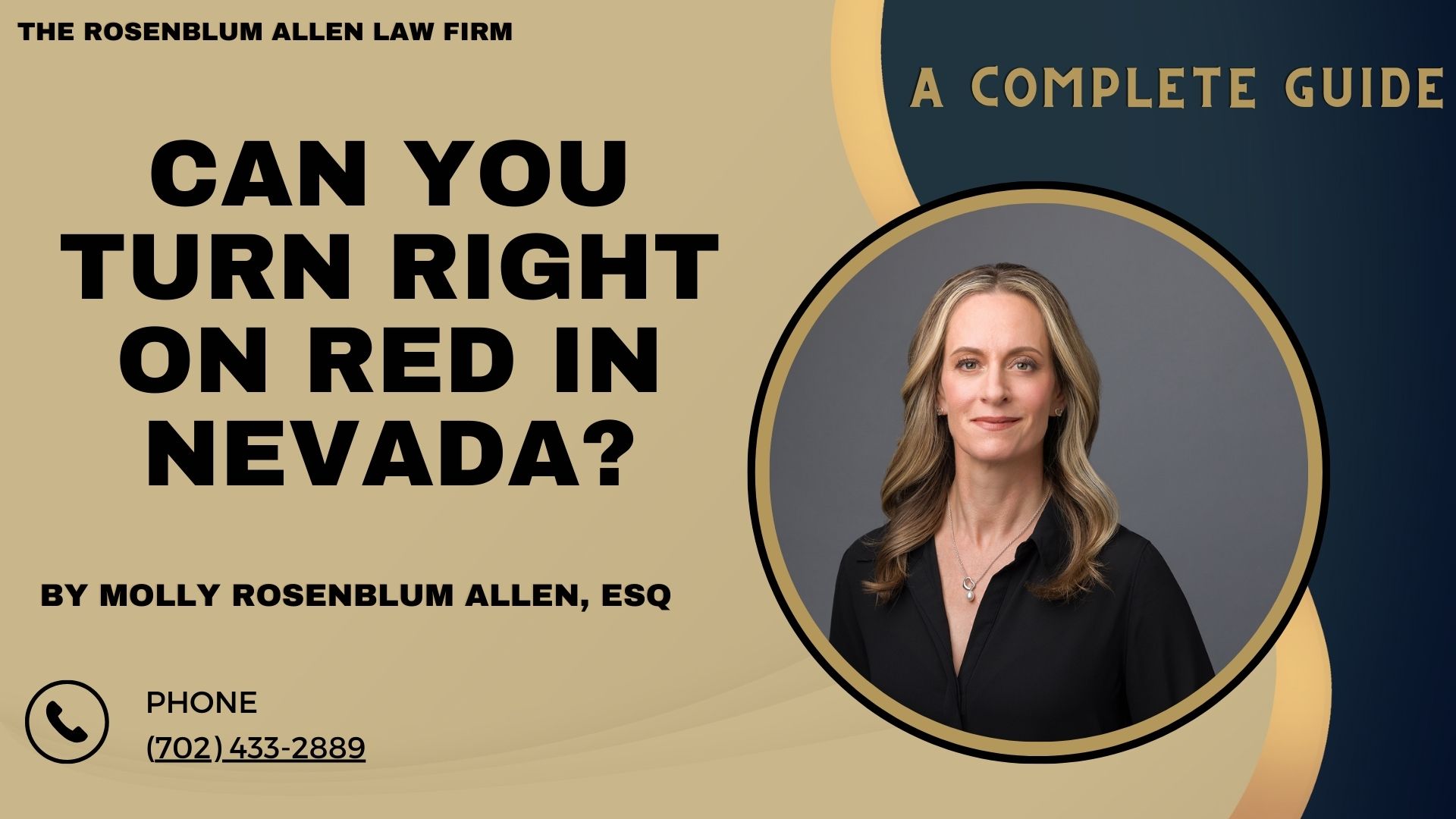Driving in Nevada requires knowing the traffic laws well. This is especially true for making right turns at red lights. This guide will clarify the rules. It will explain the exceptions and give safety tips for turning right on red.
 Right Turns on Red in Nevada: The Basic Rule
Right Turns on Red in Nevada: The Basic Rule
Nevada allows drivers to turn right on red after stopping. But, a sign can say otherwise. This rule helps traffic flow smoothly but comes with conditions:
Complete Stop: You must stop entirely before the crosswalk or stop line.
Check for Signs: Make sure no signs prohibit a right turn on red.
Yield to Others: Give way to pedestrians and vehicles with the green light.
Clear Path: Ensure the road is clear before making the turn.

Exceptions to the Rule
There are times when turning right on red is not allowed for safety reasons:
Locations Where Right on Red is Prohibited
Some intersections have specific rules:
Specific Types of Intersections: Complex or high-traffic intersections may have no turn-on red signs.
School Zones and Pedestrian Crosswalks: These areas are often restricted to protect pedestrians.
Signs and Signals that Restrict Right on Red
Be aware of signs and electronic signals that might indicate a no right-on-red rule:
Regulatory Signs: Signs near traffic lights that clearly state no turn on red.
Electronic Signals: Some intersections use electronic signs to indicate when turning right on red is not allowed.

Safety Considerations for Turning Right on Red
I was turning right on red, which needs attention and care for everyone’s safety.
Pedestrian and Bicyclist Right-of-Way
Always give way to pedestrians and bicyclists:
Responsibilities of Drivers: It’s your responsibility to check for and yield to pedestrians and bicyclists.
How to Yield Properly: Even after stopping, let pedestrians and bicyclists pass before you turn.
Visibility and Speed
Make sure you can see well and control your speed:
Assessing Intersection Safety: Look around the intersection carefully for any vehicles, pedestrians, or bicyclists.
Recommended Speed for Turning: Turn slowly to react safely to sudden changes.
Follow these rules and safety tips. You’ll make roads safer in Nevada and avoid traffic tickets.

Legal Consequences of Violating Right on Red Laws
Not following the rules can lead to several legal consequences in Nevada. Understanding these can help underscore the importance of following traffic laws meticulously.
Potential Fines and Penalties
Violating the right on red laws can result in fines that vary by jurisdiction within Nevada. These fines are usually accompanied by:
Traffic Citations: A formal notice that you’ve violated traffic laws.
Monetary Fines: Specific amounts vary, but fines are a financial penalty for the violation.
Impact on Driving Record and Insurance Rates
Beyond immediate fines, there are longer-term consequences to consider:
Points on Your Driving Record: In Nevada, traffic violations, including illegal right turns on red, can add points to your driving record. Accumulating too many points can lead to driver’s license suspension.
Increased Insurance Rates: Insurance companies regularly review driving records when determining policy rates. Violations can raise premiums, reflecting a higher risk associated with insuring the driver.
Understanding and following the rules on right turns on red is key. It keeps traffic flowing well in Nevada. It also avoids these legal and financial penalties. It’s critical for responsible driving. It ensures that roads are safe for everyone.

Breaking It All Down
Understanding the rules about turning right on red in Nevada is more than knowing when it’s legal. It’s about ensuring safety—for yourself, pedestrians, and other drivers. Remember, the law allows this maneuver after a full stop and when it is safe. But, there are specific places and situations where it’s not allowed. Always look for signs showing restrictions. Give priority to pedestrians and bicyclists.
Driving with caution and awareness at intersections can prevent accidents. It ensures a smoother, safer driving experience for everyone. By following these guidelines, you make driving in Nevada safer. Remember, it’s better to wait for a green light when in doubt. Safe driving starts with understanding and respecting the rules of the road.

Frequently Asked Questions
Is it mandatory to stop before turning right on red in Nevada?
Yes, you must come to a complete stop before making a right turn on red. This ensures you have time to check for traffic and pedestrians.
Can I turn right on red from any lane in Nevada?
Usually, you can only turn right on red from the right-most lane. Signs or signals will indicate if turns from other lanes are permitted.
What should I do if an intersection in Nevada has a “no right on red” sign but it’s obstructed?
If you can’t see a sign due to obstruction, proceed cautiously. However, waiting for a green light is safest. If ticketed, you may need to contest it with evidence of the obstruction.
Do the rules for turning right on red differ in different cities within Nevada?
While the basic rule applies statewide, some cities may have specific intersections with additional restrictions. Always watch for local signs and signals.
Are there any times of day when turning right on red is not allowed in Nevada?
There are no time-specific restrictions for turning right on red in Nevada. However, restrictions apply all day at marked intersections.
Can cyclists turn right on red in Nevada?
Cyclists must follow the same rules as motorists for right turns on red. They should come to a complete stop and proceed only when safe.
What are the consequences of illegally turning right on red in Nevada?
Violating right-turn rules can result in traffic citations, fines, and points on your driving record. Severity varies based on the situation and any accidents caused.
Are cameras used to enforce right-on-red laws in Nevada?
In some areas, traffic cameras may enforce traffic laws, including right-on-red violations. Assume compliance with traffic laws is monitored.
How can I learn about intersections with frequent right-on-red violations in Nevada?
Local law enforcement or city websites often provide information on intersections with high violation rates. This helps drivers be more cautious in these areas.
Where can I find more information on traffic laws if I’m a new driver in Nevada?
Review the Nevada Driver’s Handbook, available online and at DMV offices. It offers comprehensive details on traffic laws, including turning right on red.
Are there any exceptions for emergency vehicles turning right on red in Nevada?
When responding to calls with lights and sirens, emergency vehicles may have exemptions from standard traffic laws, including turning right on red.

Glossary
At-Fault State: A jurisdiction where the party responsible for causing an accident is liable for the damages. The fault must be established in these states to determine who pays for the damages.
No-Fault Laws: Legislation requires each party involved in an auto accident to file a claim with their insurance, regardless of who is at fault. These laws limit the ability to sue for damages.
Personal Injury Protection (PIP): A type of auto insurance coverage that pays for medical expenses, lost wages, and other non-medical costs, regardless of who caused the accident.
Comparative Negligence: A legal principle that reduces the amount of damages a plaintiff can recover in a negligence-based claim based on the degree of fault of each party.
Statute of Limitations: The maximum period after an event within which legal proceedings may be initiated.
Economic Damages: Compensation for quantifiable monetary losses, such as medical bills, lost wages, and property damage.
Non-Economic Damages: Compensation for non-monetary losses, such as pain and suffering, emotional distress, and loss of enjoyment of life.
Community Property: A legal principle in some states where all property acquired during the marriage is considered equally owned by both spouses and typically divided equally in a divorce.
Uninsured/Underinsured Motorist Coverage: This insurance protects you if you’re involved in an accident with a driver who either does not have insurance or does not have enough insurance to cover the damages.
Liability Insurance: Coverage that pays for another individual’s bodily injuries or property damage for which you are responsible. It is mandatory in most states, including Nevada.
Divorce Proceedings: The legal process of dissolving a marriage, which includes resolving issues such as asset division, child custody, and spousal support.
Alimony: Financial support paid by one ex-spouse to the other after divorce, based on an agreement between the couple or a court decision.
Child Custody: Legal terms that describe the legal and practical relationship between a parent and child, including the right to make decisions for the child and the parent’s duty to care for the child.
Best Interests of the Child: A standard that courts use to decide custody issues, focusing on the child’s happiness, security, mental health, and emotional development.

Additional Resources for You
In addition to guiding you through Nevada’s traffic laws, our lead attorney, Molly Rosenblum Allen, Esq., has created a suite of resources to assist you in times of need. Whether you’re dealing with the aftermath of an accident or seeking legal advice on personal injury matters, The Rosenblum Allen Law Firm is here to support you. Here are some valuable resources crafted to help you navigate through challenging times:
Las Vegas Personal Injury Attorney: For comprehensive support and representation in personal injury cases. Learn more.
Las Vegas Car Accident Attorney: Effective legal assistance for those affected by car accidents. Find out more.
Motorcycle Accident Lawyer Las Vegas: Specialized support for motorcycle accident victims. Explore your options.
Wrongful Death Lawyer Las Vegas: Compassionate legal care for families facing wrongful death cases. Discover how we can help.
Truck Accident Attorney Las Vegas: Assistance for those involved in truck accidents, ensuring they receive the justice and compensation they deserve. Read more.
Las Vegas Drunk Driving Accident Attorney: Dedicated support for victims of drunk driving accidents. See how we can assist.
Las Vegas Slip and Fall Attorney: Effective advice and representation for slip and fall accident cases. Get informed.
Molly Rosenblum Allen, Esq., and The Rosenblum Allen Law Firm are committed to providing you with the legal guidance and support you need during challenging times. These resources are designed to offer assistance and information to help you make informed decisions about your legal needs.

Outside Resources for You
National Highway Traffic Safety Administration (NHTSA): Offers a wealth of information on road safety, including laws, tips, and statistics to help you stay safe on the roads. Visit NHTSA.
American Bar Association (ABA): A comprehensive resource for finding legal help, understanding your legal rights, and accessing public education information related to the law. Explore ABA.
United States Courts: Provides an overview of the federal court system, including educational resources about the legal process and how to find help. Check out United States Courts.
FindLaw: A helpful resource for free legal information on a wide range of topics, including personal injury and traffic laws, along with tips for hiring an attorney. Discover FindLaw.
American Association for Justice (AAJ): Offers resources for those seeking justice in personal injury and other legal matters, with a focus on advocacy and education. Learn more about AAJ.
Safe Kids Worldwide: An organization dedicated to preventing injuries in children, Safe Kids Worldwide provides resources on road safety and how to protect young pedestrians and cyclists. Visit Safe Kids Worldwide.
Insurance Institute for Highway Safety (IIHS): Provides ratings, research, and recommendations to improve road safety, including studies on the effectiveness of traffic laws. Explore IIHS.

A Special Message from Our Lead Attorney, Molly Rosenblum Allen, Esq

Dear Reader,
Thank you for taking the time to engage with our resources. I hope you found the information valuable. It has given you a clearer understanding of your rights and the legal paths available to you.
If you’re overwhelmed by your situation or need guidance on what to do next, reach out. We, as a team, are committed to helping you. We will provide the support and expertise you need to navigate your legal issues.
Call us at (702) 433-2889 to get the ball rolling on your situation. Each case is unique. We are here to listen, understand, and work hard for your best possible result.
Warm regards,
Molly Rosenblum Allen, Esq.
The Rosenblum Allen Law Firm



